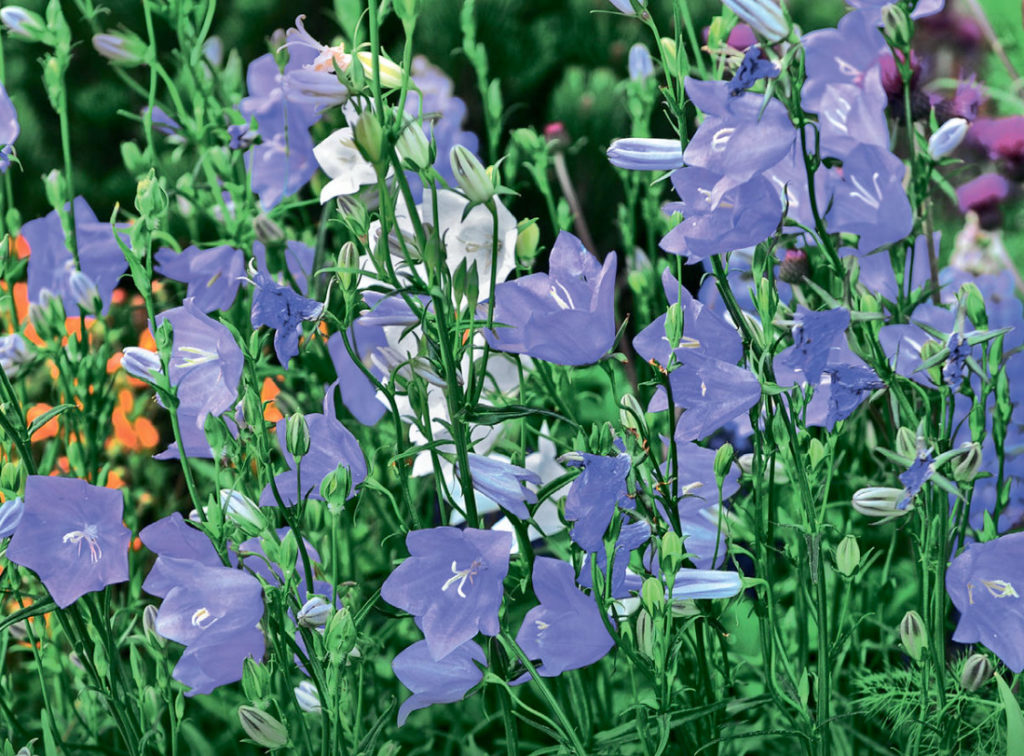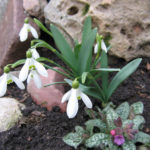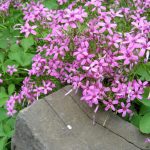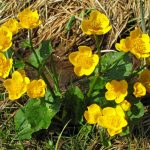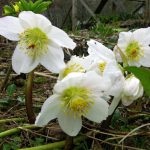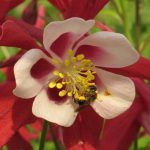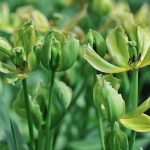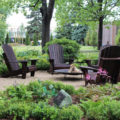Bluebell is an extensive genus, including many species and hybrids. They differ in height, shape of foliage and bush, flowering time. The palette includes all shades from blue to purple, as well as white and pink.
In general, all types of bluebells can be divided into two groups: high erect and low groundcover. Let’s talk about the first ones and choose the most spectacular views for our flower beds.
Tall erect bells
Campanula persicifolia
Varieties of Campanula persicifolia (height 45-90 cm) are white and blue, with double or simple deep and small flowers–”cups”, which from the beginning of summer rise on thin peduncles. Garter deprives them of charm, so it’s better to let them grow as they want and rely on neighboring plants.
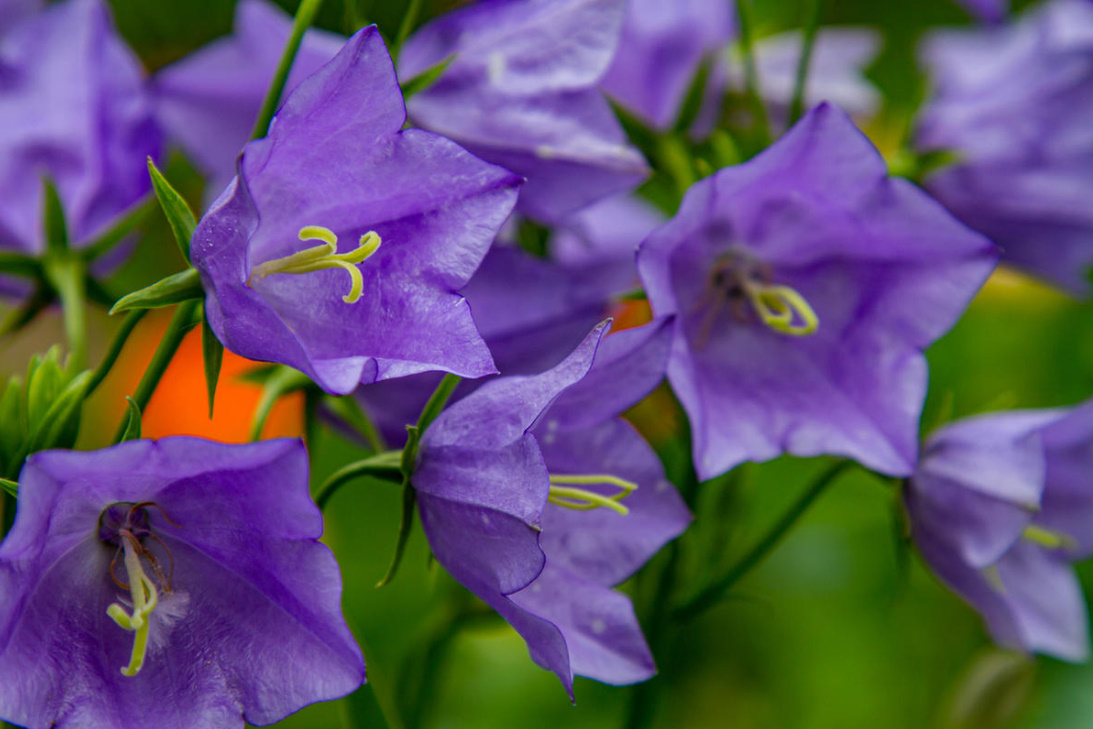
Campanula lactiflora
Large, phlox-like panicles of Campanula lactiflora inflorescences (90-150 cm) bloom on dense tall stems in July. There are white, pink, blue and lilac varieties.
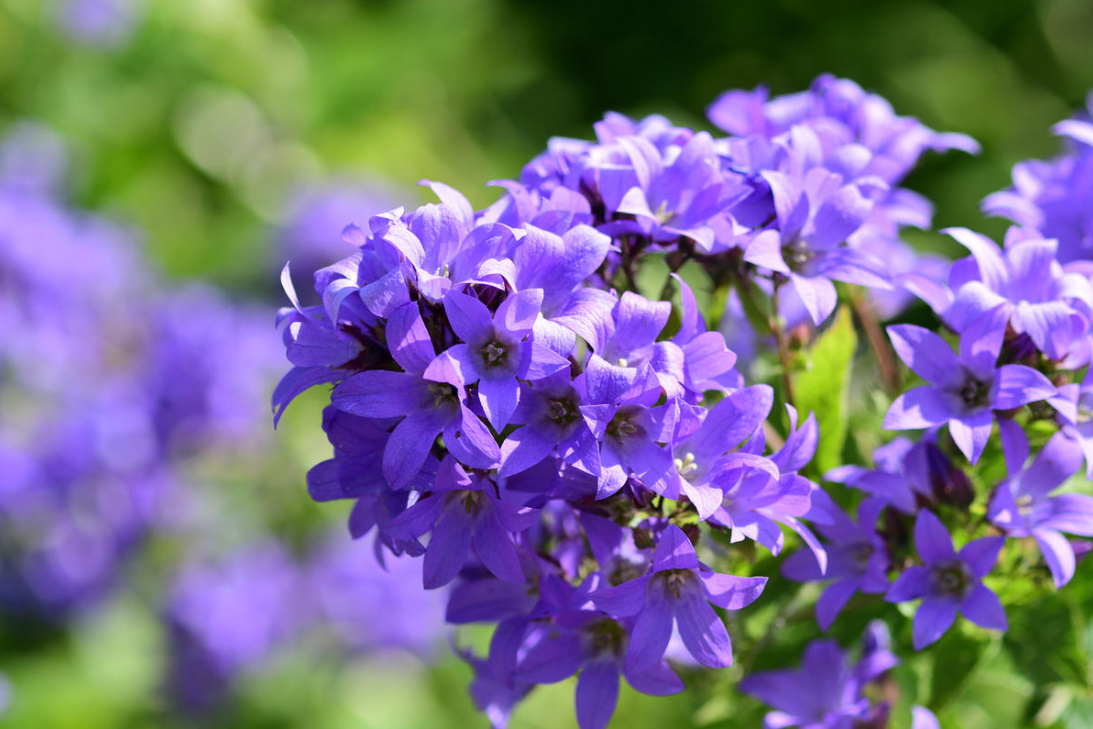
Campanula latiloba and Campanula latifolia
Two species – Campanula latiloba and Campanula latifolia (120-150 cm) – give dense floral arrows. The first one has blue and purple “cups” that open into wide, almost flat “saucers”, while the second one remains deep and looks slightly upwards; it also has a shape with white flowers. They bloom from mid-June for a month.
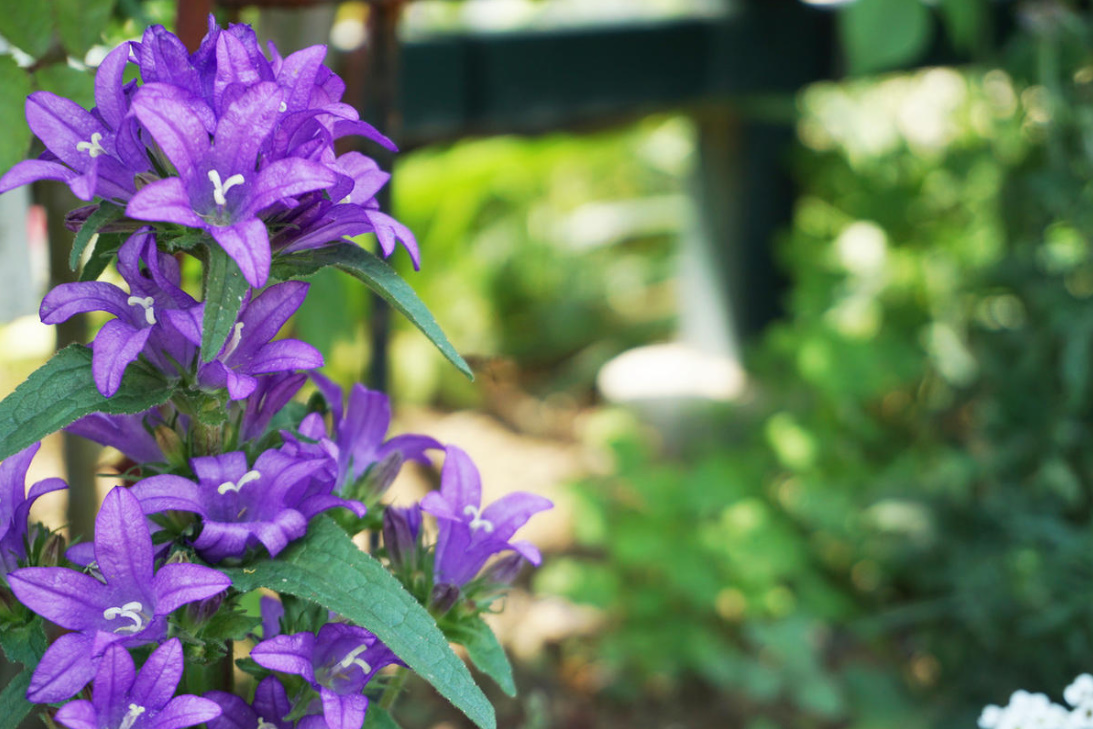
Other types
There are also more aggressive long-rooted root species. Campanula takesimana and Campanula punctata – both up to 60 cm tall – have large drooping flowers of a dirty pink shade, appearing from June to August.
The flowers of Campanula glomerata are 30-60 cm, gathered in bundles on dark peduncles and look up. There are sky-blue, purple, pink and white cultivars.
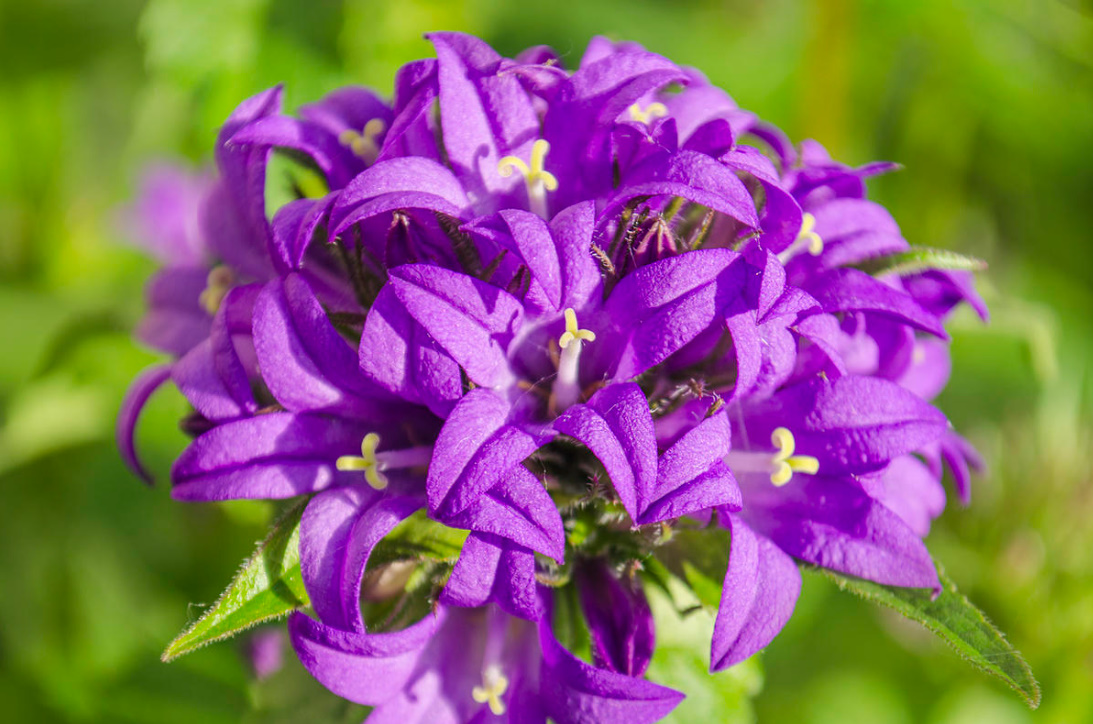
It blooms from early to mid-summer.
Optimal growing conditions
Bluebells love the sun, but they grow well in scattered shade. And in regions with hot summers, they will even prefer shading during the hottest hours. The most shade—tolerant are Campanula takesimana, Campanula punctate, Campanula glomerata and Campanula latifolia.
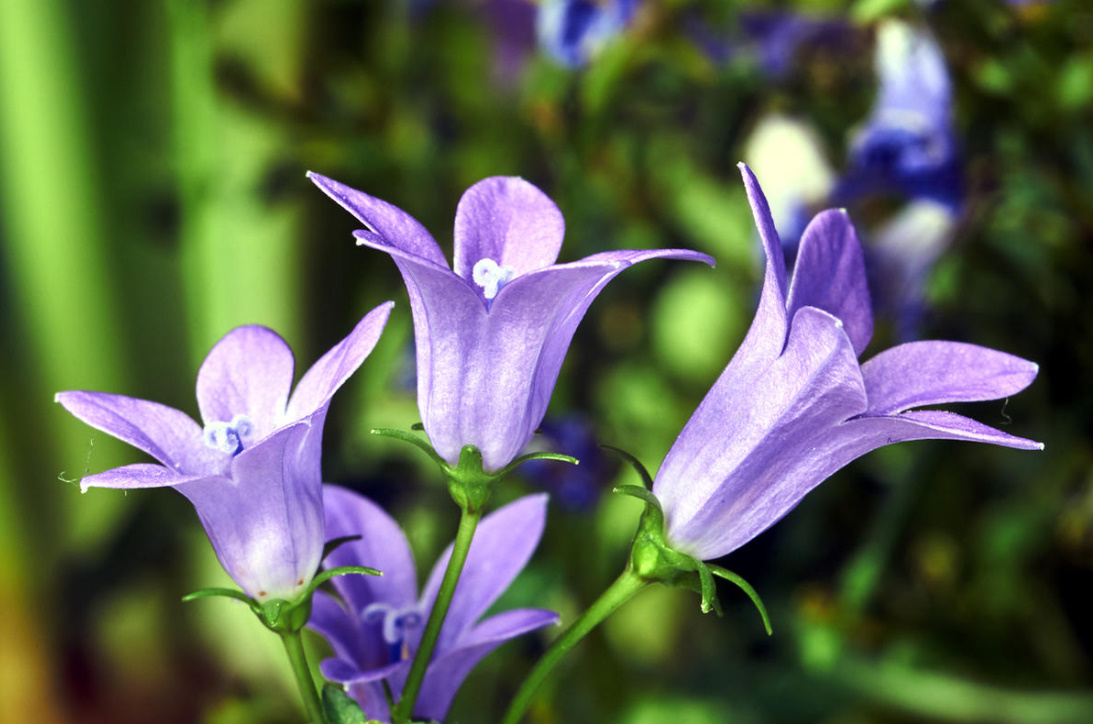
A compost-rich, constantly moistened, but well-drained soil is ideal, but winter dampness is absolutely contraindicated for bluebells.
Rooted plants tolerate short-term dryness well, especially if they are well mulched and covered from the scorching sun, but they will suffer when the soil dries completely.
Problems and solutions
Varieties of Campanula lactiflora can be short—lived – three to four years after planting, woody rhizomes begin to grow above the ground, renewal buds winter poorly, the bush loses its power and gives one or two weak shoots. Therefore, just in case, it is better to root the cuttings annually.
Bluebells tie a large number of seeds, which are easily scattered throughout the garden. Varieties are lost, plants appear where they were not expected. In addition, many fading bells lose their decorative effect. Therefore, it is better to remove drying flowers immediately. If you wait until the plant completely blooms and cut the entire peduncle, it will save time, but increase the chance of self-seeding: the seeds of the first flowers will already ripen.
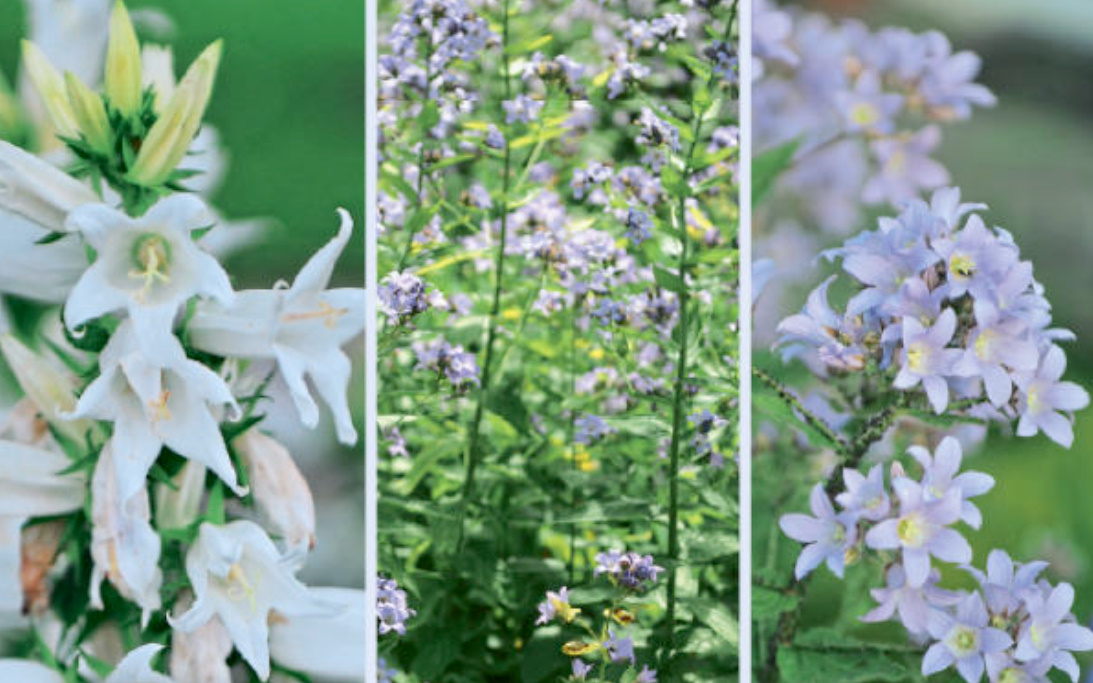
If the bell stems fall apart, in late May or early June, you can shorten them by a third or even half the height. The bush will bloom later and will be lower, but branchier and more abundant. Another solution is to install mesh metal supports in April, through which the bell will sprout.
Invasive species are aggressively spreading in fertile moist garden land, so think twice before planting Campanula takesimana, Campanula punctata and Campanula glomerata in a mixborder – will you be able to keep them within the boundaries? They belong in the “wild” flower beds, where they can compete for existence with other equally assertive plants.
Pellets with metaldehyde are saved from snails and slugs, a wide range of insecticides are saved from the invasion of aphids, and appropriate fungicides are saved from powdery mildew and rust. But usually these problems do not reach the scale at which it is impossible to do without chemistry.
Care during the season
Spring
- In April – May, new seedlings are planted, old bushes are divided and planted. The distance between the plants is 30 cm, the only exception is the large Campanula lactiflora – it is planted at a distance of 60 cm from the neighbors.
- Watering and mulching with organic matter will help keep the soil cool and moist.
- Bells are responsive to the introduction of bone meal, which needs to be embedded in the ground.
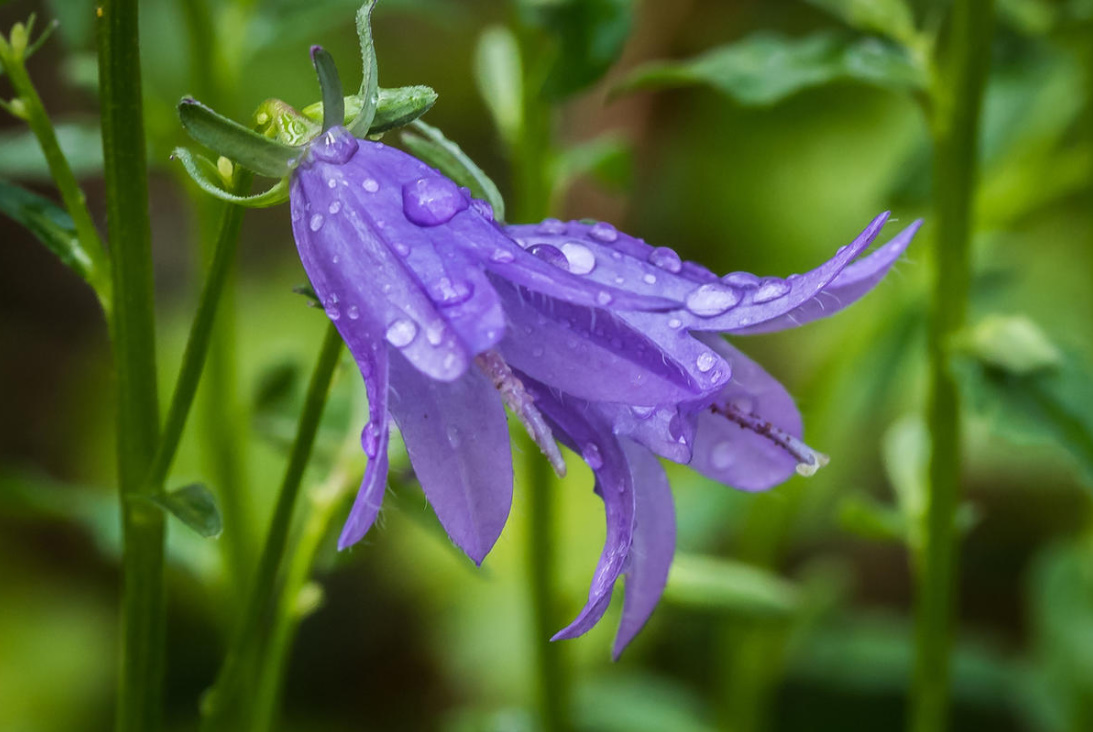
Summer
- Varieties of Campanula lactiflora in early June can be shortened by a third of the height, then it will be more compact and will bloom a little later, when the first wave of roses will bloom. Trim its faded flowers, and new ones that will open lower along the stem will not take long to wait. This simple technique will help to stretch the flowering until autumn.
- In other species, the flowers are removed as they fade to prevent self-seeding and maintain the neatness of the flower garden: many bluebells look untidy when they fade, especially white cultivars. The stems that have finished flowering can be cut to the ground. Do not forget about watering if there is no rain.
Autumn
- For the winter, cut the stems to the basal leaves (if you haven’t done it before) and mulch each bush with a compost shovel.
Reproduction of bluebells
Most bluebells only benefit from dividing bushes once every 3-5 years, and rapidly growing species can be divided more often. So division is the easiest way to propagate varietal plants.
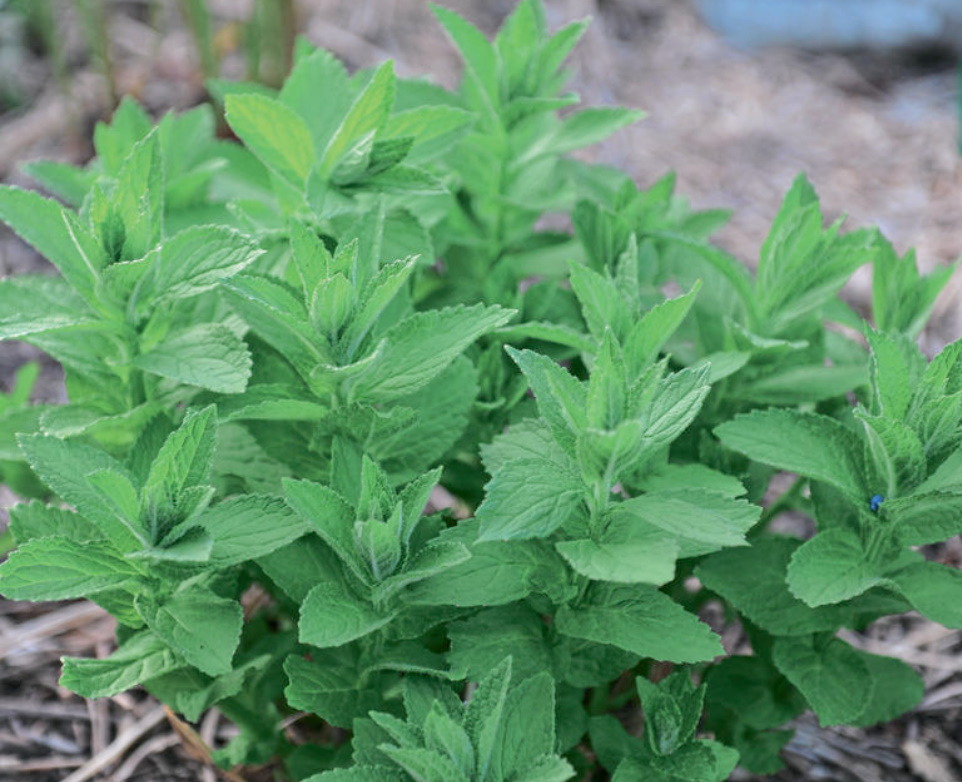
Another way is rooting cuttings “with a heel” in late spring – early summer. The species can be propagated by sowing seeds in the open ground for the winter.
Tip: bluebell seeds germinate in the light, so they are not sprinkled with earth.
Bells in garden design
1. Bluebells are traditional participants of the English mixborder in the cottage garden, here they are adjacent to Lychnis, Digitalis, Achillea, Thalictrum, Astrantia, Polemonium, Dianthus, Delphinium, Coreopsis and other perennials.
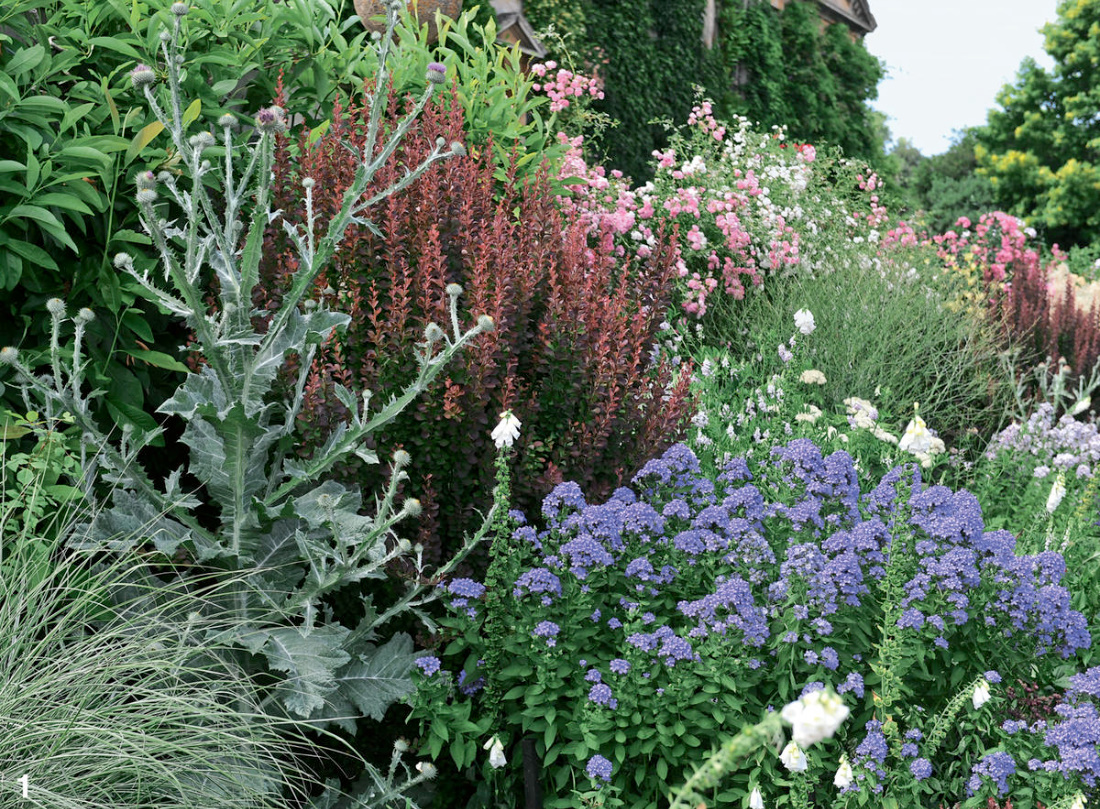
2. And in the village flower garden, they will also be “their own” in the company of Hemerocallis, lilies, Málva, Alchemilla, Leucanthemum.
3. Many bluebells perfectly tolerate partial shade and get along with ferns, Epimedium, Astilbe, Rodgersia, Hosta.
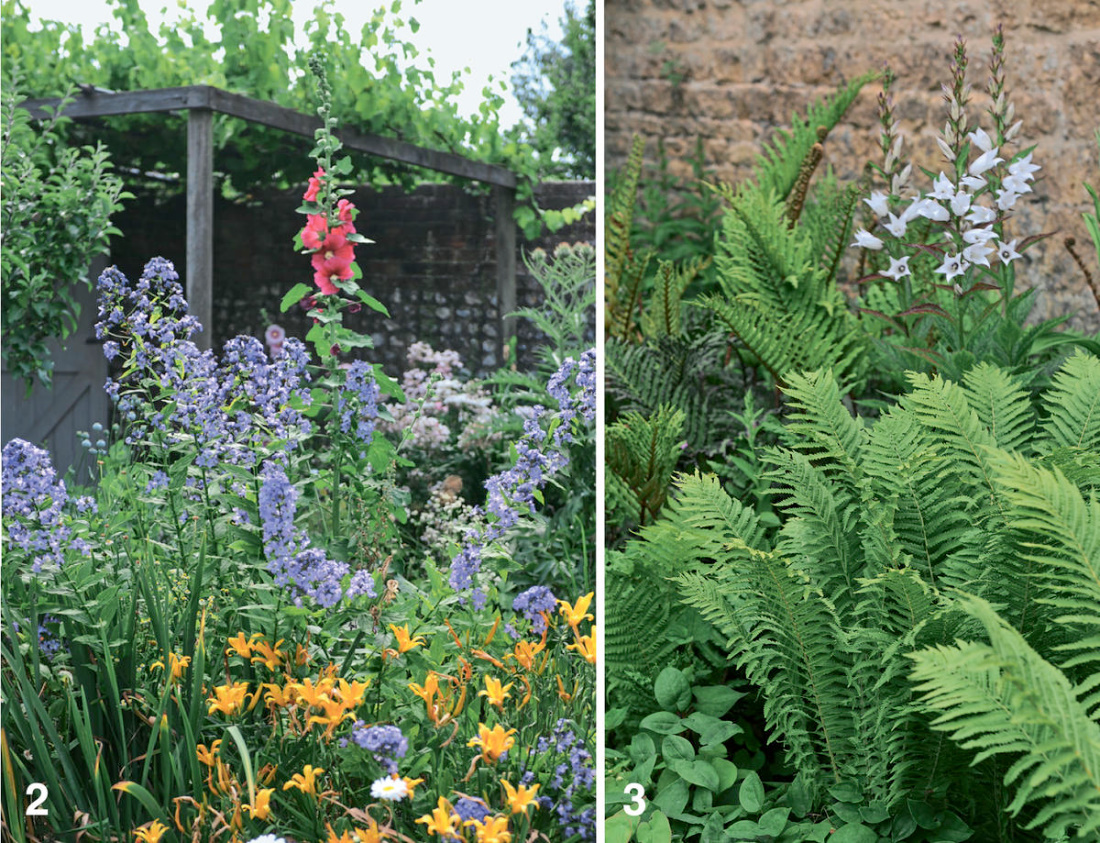
4. White varieties of bluebells are perfectly combined with any roses, pink – with purple, red and pink, and purple and blue – with purple-lilac, yellow, peach and orange varieties.
5. A white flower garden will not do without bells, since almost every species has dazzling snow-white forms and varieties.

6. Campanula persicifolia with its charming manner of bending in all directions is irresistible in the foreground of flower beds.
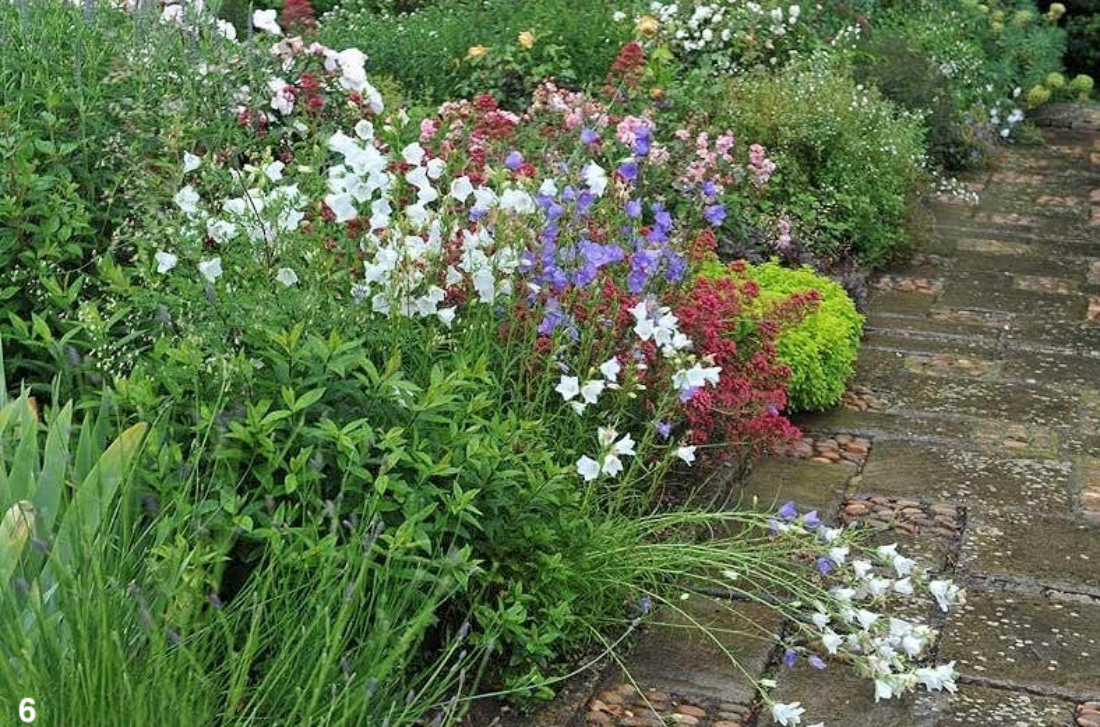
7. Campanula lactiflora will perfectly fit into a natural-style flower garden and will even be able to naturalize in it.
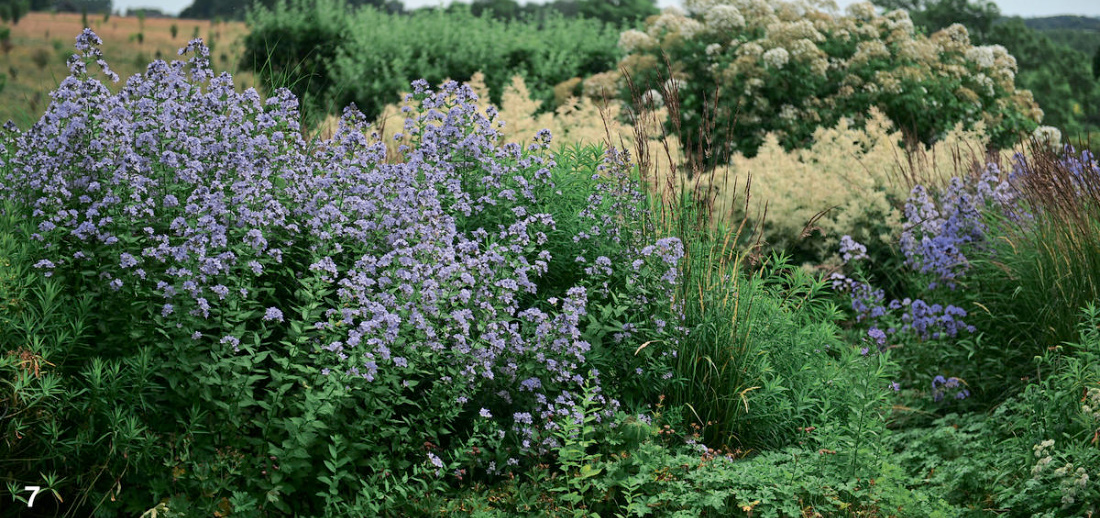
8. Campanula lactiflora and its varieties can be called “architectural” plants. They are perfectly combined with other giants: Persicaria polymorpha, Macleaya, Eupatórium.
9. Bluebells can become real “stars” of the blue flower garden along with Amsonia, Nepeta, Aquilegia, Delphinium, decorative onions, bearded and Siberian irises, perennial sage, lupines, garden geraniums, blue varieties of Phlox paniculata.
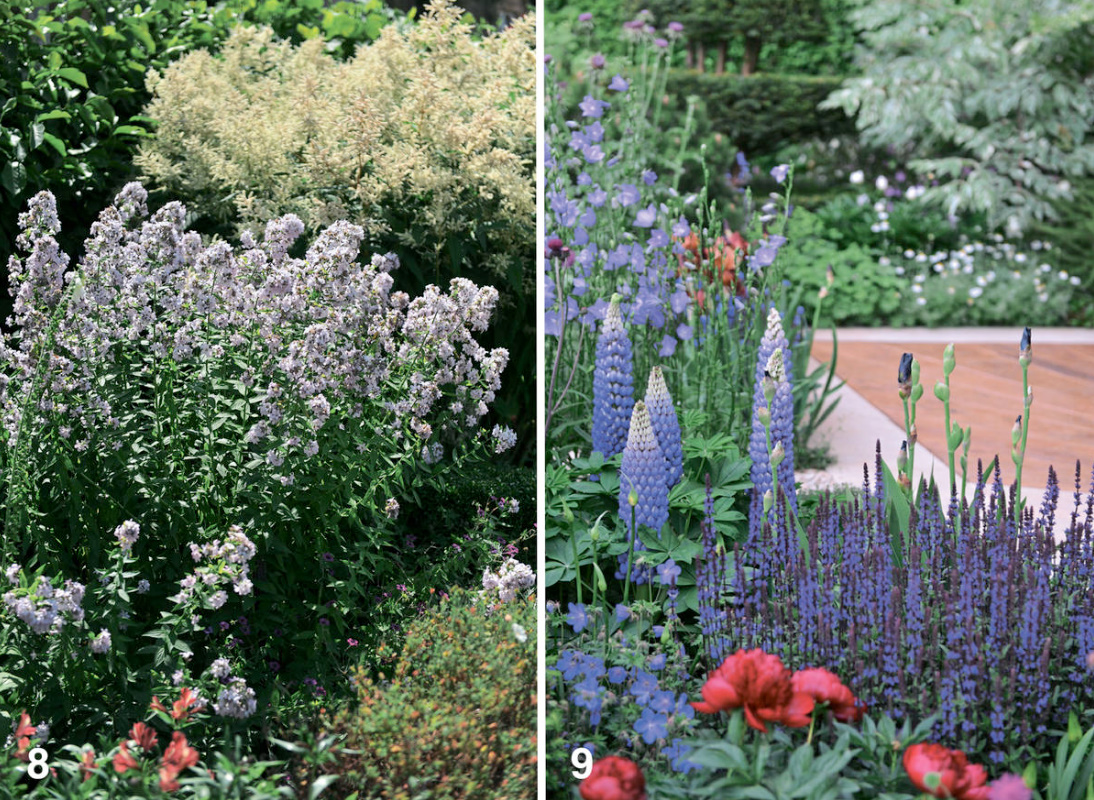
10. Bells with an unusual flower shape can replenish the collector’s flower garden. For example, terry: Campanula punctate ‘Pantaloons’ (“cup in a cup”) and Campánula persicifólia’Hampstead White’ (“cup on saucer”) or absolutely unusual split-flowered forms of Campanula takesimana ‘Beautiful Trust’ and Campanula punctate ‘Octopus Pink’.
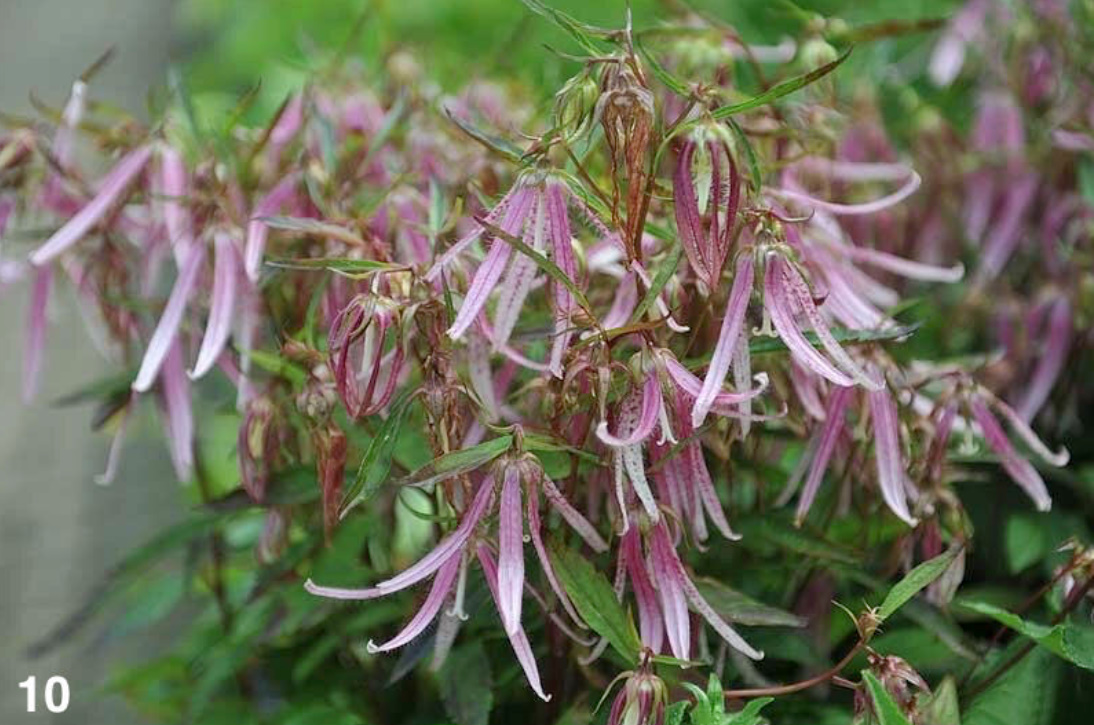
Do tall erect bluebells grow in your garden? Share the secrets of care and tell us what flowers grow next to these beauties.
